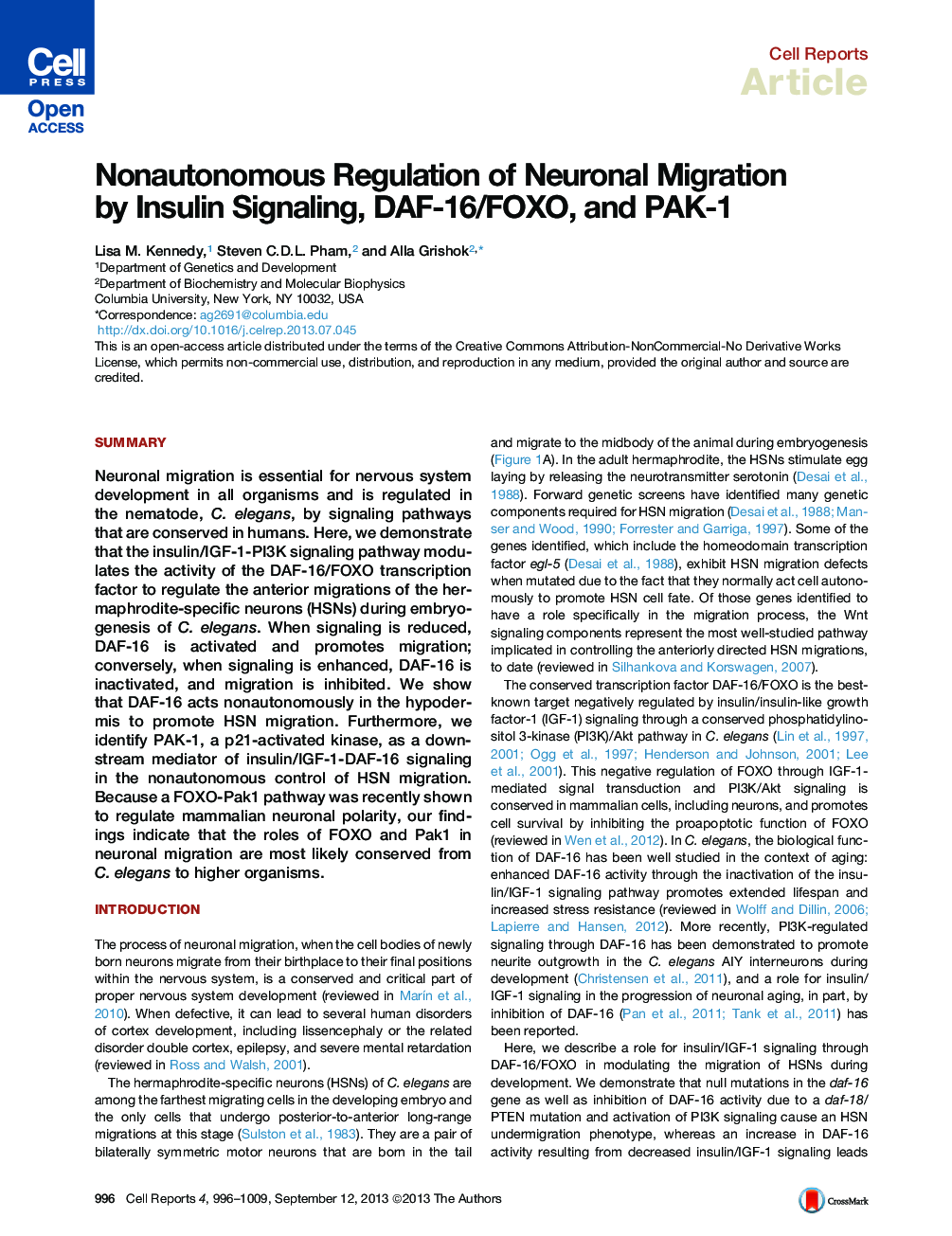| Article ID | Journal | Published Year | Pages | File Type |
|---|---|---|---|---|
| 2040813 | Cell Reports | 2013 | 14 Pages |
•Nonautonomous DAF-16/FOXO activity in the hypodermis promotes neuronal migration•Decreased insulin signaling leads to neuronal overmigration via DAF-16 activation•Increased PI3K signaling leads to neuronal undermigration due to DAF-16 inhibition•PAK-1 acts downstream of DAF-16 to nonautonomously promote neuronal migration
SummaryNeuronal migration is essential for nervous system development in all organisms and is regulated in the nematode, C. elegans, by signaling pathways that are conserved in humans. Here, we demonstrate that the insulin/IGF-1-PI3K signaling pathway modulates the activity of the DAF-16/FOXO transcription factor to regulate the anterior migrations of the hermaphrodite-specific neurons (HSNs) during embryogenesis of C. elegans. When signaling is reduced, DAF-16 is activated and promotes migration; conversely, when signaling is enhanced, DAF-16 is inactivated, and migration is inhibited. We show that DAF-16 acts nonautonomously in the hypodermis to promote HSN migration. Furthermore, we identify PAK-1, a p21-activated kinase, as a downstream mediator of insulin/IGF-1-DAF-16 signaling in the nonautonomous control of HSN migration. Because a FOXO-Pak1 pathway was recently shown to regulate mammalian neuronal polarity, our findings indicate that the roles of FOXO and Pak1 in neuronal migration are most likely conserved from C. elegans to higher organisms.
Graphical AbstractFigure optionsDownload full-size imageDownload as PowerPoint slide
